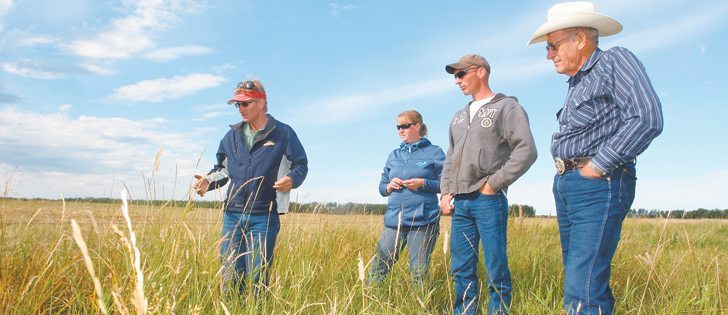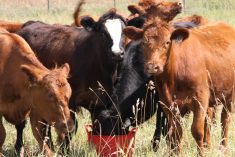Feeding cattle in the field makes sense | Wildlife can play havoc with swath grazing efforts, but there are solutions
VALLEYVIEW, Alta. — Hosting a pasture walk on your own farm is like having a free visit from a personal trainer at the gym.
Rob and Kendra Elzinga didn’t hesitate when they were asked to host the Peace Country Beef and Forage Association’s pasture walk on their Peace River area farm.
“It’s nice to listen to other people’s opinions,” said Rob Elzinga, who willingly showed Saskatchewan Agriculture regional forage specialist Lorne Klein his good and bad pasture.
“This way we can see it and not just read about it,” said Elzinga, who raises cattle north of Valleyview with a combination of grain, pasture, swath grazing and feeding hay in the farmyard.
Read Also

Animal protection delivery to change in Saskatchewan
The Saskatchewan government is looking for a new agency to handle animal welfare after Animal Protection Services of Saskatchewan decided not to renew its contract next year.
Morgan Hobin of the Peace Country Beef and Forage Association said pasture walks are designed to be learning events rather than just pointing out what producers are doing wrong.
Klein said feeding cattle in the field make sense whether they are grazed in southern Saskatchewan or northern Alberta.
Feeding hay bales in the field can recapture 34 percent of the nitrogen from the hay bale, compared to one percent of the nitrogen recapture from the bale if the manure is hauled onto the field, said Klein.
“The difference is way too big to ignore,” he said.
“I think of bales as little fertilizer packages and where I want to spread the fertilizer packages.”
Keeping the nitrogen in the field is one more way to reduce the need for high priced nitrogen fertilizer, he added.
However, swath grazing and bale grazing during the winter doesn’t work for the Elzinga family because of wildlife problems. Deer and elk leap over fences to help themselves to free food during the winter.
Swath grazing early-seeded oats and barley in the summer is an option that seems to work, said Elzinga because wildlife don’t seem to bother the swaths in the summer. As well, the practice allows pasture grazing to be postponed and manure to stay in the field.
“We want to do another year of summer swath grazing as a way of keeping the alfalfa in the field and helping to drought proof the field,” said Elzinga.
Klein suggested limiting cattle to a smaller area of the field when swath grazing to encourage them to eat all the swath and not just the heads.
Raising cattle during the dry years has also prompted the couple to re-evaluate the way they manage their livestock. Three years ago they sold two-thirds of their cattle because of limited feed.
“Drought taught us what we were doing wrong. We’ve changed a lot since the drought,” said Kendra.
Since the drought, the couple has split pastures into smaller paddocks and limited how much they work the grey-wooded soil. They have also fenced off dugouts and added troughs to prevent cattle from walking into the dugout.
Klein said grazing pasture is similar to keeping Wayne Gretzky’s hockey skills sharp.
Not grazing a pasture would be similar to not playing Gretzky for several years and expecting him to be a top player. Having Gretzky on the ice for the entire game without a rest would also not be good. It’s the same with pasture, he said.
“Forever rest is not good and forever use is not good,” said Klein.
The Elzingas were using a combination of strategies to improve pasture management, he added.
“You don’t need me here to tell you what to do. The main thing is you’re paying attention.”















